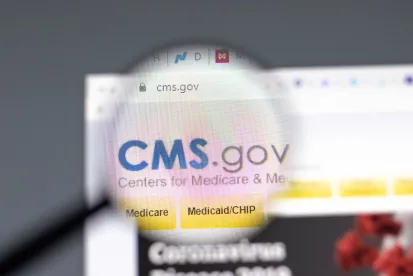Group health plan sponsors must provide annual Medicare Part D Notices (the “Notice” or the “Notices”) by October 15, 2021. It’s your last chance to make sure your Notices will be timely delivered and comply with the legal requirements. Read below for our Q&A.
What is the Notice?
The Notice discloses whether prescription drug coverage under your group health plan is creditable. Coverage is creditable only if its actuarial value equals or exceeds the actuarial value of standard prescription drug coverage – your insurer or third-party administrator should provide this information to you.
The Centers for Medicare and Medicaid Services (“CMS”) division of the U.S. Department of Health and Human Services (“HHS”) publishes model Notices (creditable and non-creditable coverage) that may be used by plan sponsors. These models remain unchanged for 2021 and can be found here.
You can instead choose to use your own customized form, but make sure it contains all of the current required provisions of the model form.
Who Gets The Notice?
All Part D eligible individuals enrolled in or seeking to enroll in your group health plan coverage, including spouses and dependents if they are otherwise Part D eligible.
Since this group could include current or former disabled or retired employees, spouses or dependents, the simplest approach to compliance is to provide a Notice to everyone enrolled or eligible to enroll in your plan.
Can I Send One Notice per Household?
Generally, yes. You can deliver a single Notice to a Part D eligible employee and all of his/her Part D eligible dependents. However, if you know that a spouse or dependent who is Part D eligible resides at a different address from the employee, you must provide separate Notices to that spouse and/or dependent.
Can I Send the Notice with Other Documents?
Yes, if certain conditions are met. You can combine the Notice with other information provided to participants, such as open enrollment materials or summary plan descriptions (“SPDs”), but the Notice must be “prominent and conspicuous.” This means the Notice portion of the document (or a reference to the section in the document being provided to the individual that contains the required statement) must be prominently referenced in at least 14-point font in a separate box, bolded, or offset on the first page of the other information that is being provided.
How Do I Deliver the Notice?
You have some flexibility in how you provide the Notice, but mail is generally the best method.
Mail. You may deliver the Notice by mail. First-class mail is recommended. Certified mail with a return receipt requested should not be used. CMS has previously indicated that it prefers mailing of Notices because Part D eligible individuals are more likely to receive and understand a paper copy.
Electronically. It may be possible to deliver the Notice electronically. As a general rule, in order to send electronically, you must take measures reasonably calculated to ensure the participants receive the Notices, which results in actual receipt (i.e., confirm receipt by participant and/or dependent).
In order to obtain safe harbor protection for your electronic delivery, you must limit your electronic delivery to employees who (a) have the ability to access electronic documents at their regular place of work and can access your electronic information system on a daily basis as part of their work duties (which may be impossible if you are in a non-office situation), or (b) have consented to receive electronic notices from you using the consent process that normally applies to delivery of SPDs, which can be found in Department of Labor (“DOL”) Regulation Section 2520.104b-1(c)(1). Unfortunately, these safe harbor electronic delivery requirements are often too restrictive and prevent many plan sponsors from being able to use electronic delivery for all recipients of the Notice, particularly in the case of spouses and dependents who are otherwise Part D eligible (but see Can I Rely on Disaster Relief to Provide the Notice Later or Electronically below for a possible exception).
In all cases, please remember that if you use electronic delivery (whether safe harbor or not), you must notify each recipient of the significance of the Notice, that a paper version is available on request, and that the recipient is responsible for providing a copy of the Notice to his or her covered Medicare-eligible dependents. You must also post the Notice on your website with a link on your home page.
Also, whatever method you choose, it is important that you retain evidence of delivery (e.g., through logs or certificates of mailing) in case of audit.
Can I Rely on Disaster Relief to Provide the Notice Later or Electronically?
It is unclear. In 2020, the IRS, DOL, and HHS issued joint relief (EBSA Disaster Relief Notice 2020-01) that relaxed the timing and distribution rules for certain employee benefit plan notices that would otherwise be due during and for a limited period following the national emergency declared as a result of COVID-19. This joint relief was later extended into 2021 (EBSA Disaster Relief Notice 2021-01). This relief relaxed certain deadlines and provided that “good faith” acts to furnish certain notices using emails, texts, or continuous access websites could be used if the sender reasonably believes the recipient has effective access to such electronic communications. HHS indicated in the joint notices that it was adopting a temporary policy of “relaxed enforcement” with respect to similar timeframes otherwise applicable to non-Federal governmental group health plans and health insurance issuers offering coverage in connection with a group health plan under applicable provisions under the PHS Act. However, nothing in the joint notices or other HHS guidance issued to-date specifically references the Notices or electronic delivery. Therefore, employers who seek to rely on the Disaster Relief Notices to provide their Notices late or electronically will be at risk of HHS taking the position that Notices sent by private group health plan sponsors were not intended to be covered by its temporary policy of “relaxed enforcement” (however, see What If I Don’t Comply? below).
What If I Don’t Comply?
There is nothing in the Medicare Part D law that provides a mechanism for CMS to actually enforce penalties or other sanctions for failure to comply with these Part D disclosure requirements, except against plan sponsors claiming the ACA retiree drug subsidy.
The bigger impact may lie with the individual. The information provided in the Notices is essential to an individual's decision whether to enroll in a Medicare Part D prescription drug plan. If a Part D eligible individual misses his/her deadline to enroll and does not have some form of creditable prescription drug coverage in place for 63 days or more, the individual will be charged a higher premium for Medicare Part D prescription drug coverage. The amount of the increase in the premium cost depends on the length of the individual’s gap in coverage.
What If My Plan Is Not Finalized?
If you have not yet finalized your 2022 offerings, you should still provide the Notice now, based on your current offerings. If the status of those offerings changes from creditable to non-creditable (or vice versa), you will need to provide an additional Notice within a reasonable period of time (maximum 60 days) after the change occurs. The original Notice should indicate that no updates will be provided if there is no change in the plan’s status as creditable or non-creditable (as applicable).
Additional Notice Triggers & Filing Requirements
This is also a good time to check your processes to make sure that you are providing the Notice at all other times required by law:
-
Prior to an individual's initial enrollment period for Part D (your October 15th Notice will be deemed to satisfy this requirement);
-
Prior to the effective date of coverage for any Part D eligible individual who enrolls in your prescription drug coverage;
-
If you no longer offer prescription drug coverage or change it so that it is no longer creditable or becomes creditable; and
-
Upon request by the Part D eligible individual.
Online Disclosure to CMS
In addition to your Notice obligations, you should make sure that you, or your third-party administrator or insurer, complete the Online Disclosure to CMS Form to report the creditable coverage status of your prescription drug plan. The Online Disclosure should be completed annually no later than 60 days after the beginning of a plan year (e.g., contract year, renewal year), within 30 days after termination of a prescription drug plan, or within 30 days after any change in creditable coverage status.









 />i
/>i

